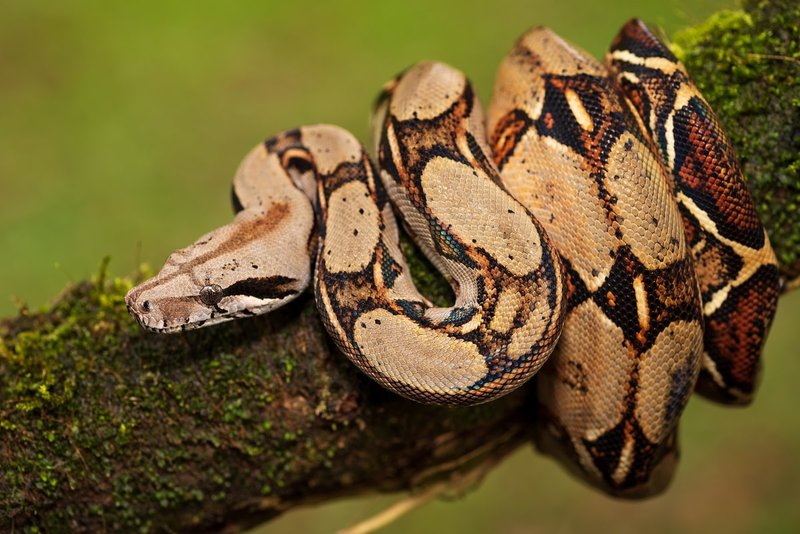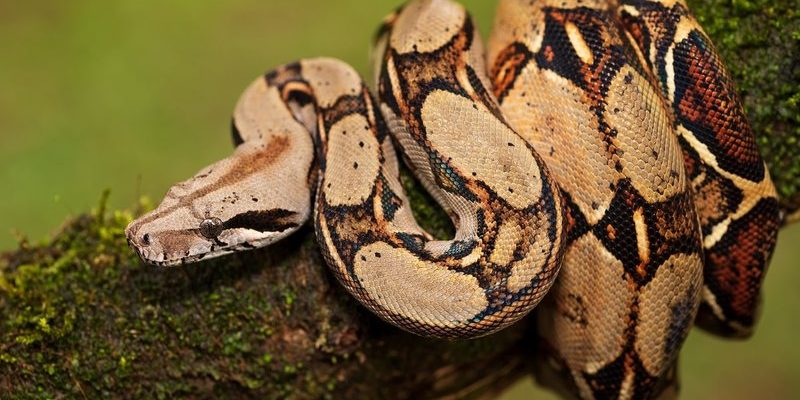
Boa constrictors are part of the *Boa* family, which includes several species that are often confused with one another. They’re known for their impressive size, distinctive patterns, and, yes, their ability to squeeze prey tightly before swallowing it whole. But don’t let that scare you; they’re much more than fearsome hunters. Let me take you on a journey to discover where these remarkable snakes are located, what environments they thrive in, and some fun facts about their habitats!
Natural Range of Boa Constrictors
Boa constrictors can be found primarily in Central and South America. Their range extends from southern Mexico down through parts of Central America, including countries like Belize and Panama, all the way to the lush landscapes of Brazil, Paraguay, and Argentina. They thrive in a variety of environments, from tropical rainforests to dry scrublands. This adaptability is key to their survival.
In the wild, you might spot boa constrictors in places like:
- Rainforests—where they bask in the humid air
- Savannas—where they blend in with the tall grasses
- Deserts—where they find shelter among rocks and vegetation
Their natural camouflage helps them blend seamlessly into these environments, making them skilled ambush predators. Honestly, it’s a bit like hiding in plain sight!
Boa Constrictors in Rainforests
Rainforests are known for their incredible biodiversity, and boa constrictors are right at home among the dense foliage. These snakes often reside in the trees, allowing them to hunt birds, small mammals, and even other reptiles. Think of them as the silent sentinels of the jungle, patiently waiting for their next meal.
In places like the Amazon Rainforest, the competition for food is fierce. Boa constrictors have evolved to be excellent climbers, using their powerful muscles to navigate branches high above the ground. The high humidity in these rainforests also keeps their skin hydrated, which is essential for their health. Here, they can often be spotted coiled around tree branches, soaking in the dappled sunlight.
Surprisingly, these snakes also play a vital role in their ecosystem. By controlling the population of their prey, they help to maintain the balance within their habitats. So, the next time you think of a boa constrictor coiled up in a tree, remember that they’re not just hanging out; they’re hard at work as nature’s pest controllers!
Habitats Outside the Rainforest
While most people picture boa constrictors in rainforests, they can thrive in various other habitats as well. In the dry forests and scrublands of Central America, these snakes can adapt to less humid conditions. Here, they often hunt small mammals and birds that make the arid landscape their home.
In fact, boa constrictors have an impressive ability to regulate their body temperature. If they are too cold, they’ll bask in the sun on rocks or tree branches. If it gets too hot, they’ll retreat to the shade—sometimes under bushes or inside rock crevices. This adaptability is crucial for their survival in diverse climates.
Also, in areas like the Chaco region of Argentina, you might find them slithering through grasslands with scattered trees. Here, they not only inhabit the ground but also venture up into the trees, displaying their versatility as both terrestrial and arboreal hunters.
Boa Constrictors in Urban Areas
Believe it or not, boa constrictors can also be found in urban environments, particularly in regions close to their natural habitats. As cities expand, these snakes sometimes take up residence in backyards, parks, and gardens. They might be drawn to these areas in search of food, such as rodents.
Encountering a boa constrictor in a city can be surprising! However, it’s important to remember that they typically avoid human interaction. They prefer to blend into their surroundings and will slither away if approached. If you ever spot one, give it space and let it go on its way; they’re more helpful than you might think in keeping rodent populations in check.
Botanists and wildlife enthusiasts have noticed that urban parks can actually support a surprising amount of biodiversity. In these green pockets, boa constrictors can find shelter and food, showcasing their incredible adaptability.
Conservation Status and Threats
Despite their vast range, boa constrictors face several threats that can impact their populations. Habitat destruction due to deforestation, urbanization, and agriculture is a major concern. As their natural environments shrink, these snakes find it harder to thrive.
Additionally, boa constrictors are sometimes targeted for the exotic pet trade. While they can be kept in captivity, it’s essential for owners to understand their care requirements. Buying boas from the wild can lead to population declines, so it’s always best to adopt from reputable breeders or rescues.
Conservation efforts are underway to protect the diverse habitats where boa constrictors live. Many organizations work on preserving rainforests and educating the public on the importance of these beautiful snakes in maintaining ecological balance.
Fun Facts About Boa Constrictors
Now that we’ve explored where boa constrictors are found, let’s lighten things up with some fun facts! These creatures are full of surprises.
– Size and Strength: Boa constrictors can grow quite large, often reaching lengths of 10 feet or more. They can weigh anywhere between 60 to 100 pounds!
– Unique Patterns: Each boa constrictor has a unique pattern of spots and colors, similar to how humans have different fingerprints. This helps with camouflage in their environment.
– Long Lifespan: In captivity, boas can live for over 20 years, sometimes even reaching 30! This longevity makes them a significant commitment for pet owners.
– Ambush Techniques: When hunting, boa constrictors use an ambush technique. They stay still and hidden until the right moment to strike, relying on surprise rather than speed.
These fascinating traits make boa constrictors not just predators but also remarkable survivors in various environments.
Boa constrictors truly showcase nature’s incredible adaptability. From the lush rainforests of South America to the bustling streets of urban centers, these snakes find ways to thrive in diverse habitats. Their role in the ecosystem is crucial, acting as both predator and prey.
As we admire their beauty and complexity, it’s essential to remember the challenges they face and the importance of conservation. Whether you encounter one in the wild or in a pet store, understanding where boa constrictors are found and how they live can deepen our appreciation for these extraordinary reptiles. So, the next time you think of a boa constrictor, picture it gracefully gliding through its lush home—an emblem of the wild, waiting to inspire wonder in all of us.

